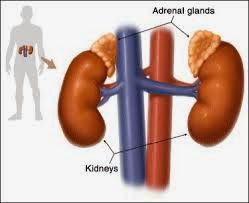by Glen Depke, Traditional Naturopath
As you are most likely already aware of, hormone balance is a significant focus of Depke Wellness. We have reviewed over 4,500 adrenal test kits in our history and out of these 4,500 health challenged individuals, we have seen only 5 tests return with normal adrenal function. Yes I said ONLY 5! Recognize that this is about 1/10 of 1%. So in essence, if you have a health issue, you most likely have an adrenal issue.
Now while we have assisted thousands in regaining their adrenal balance and reset their HPA axis there can at times be some “hiccups” with a small percentage of clients. Understand that about 90 to 95% of our client base responds very well to the adrenal protocols that are recommended at Depke Wellness, there is still about 5 to 10% that will have some challenges.
Some clients simply feel as if their hormones are truly going crazy.
So why is it that so many will progress with relative ease and others seem to struggle regardless of fact that they addressed their triggers for adrenal insufficiency, they follow their protocols to a tee and the even look at other chronic factors such as their gut health and chronic inflammation?
The reason for this is very often tied into liver function.
Understand that the liver is the body’s primary detoxifier and keeping it healthy is critical to your overall health, which includes proper metabolism and function of your hormones.
If you are wondering if your liver function is up to par, ask yourself the following questions:
- Are you overweight?
- Are you having problems with your hormones?
- Do you engage in heavy alcohol or tobacco use?
- Do you have high exposure to chemicals such as herbicides or pesticides?
- Have you been diagnosed with gallstones?
- Have you been diagnosed with a liver disease?
- Production of bile, which helps carry away waste and break down fats in the small intestine during digestion
- Production of certain proteins for blood plasma
- Production of cholesterol and special proteins to help carry fats through the body
- Store and release glucose as needed
- Processing of hemoglobin for use of its iron content (the liver stores iron)
- Conversion of harmful ammonia to urea (urea is one of the end products of protein metabolism that is excreted in the urine)
- Clearing the blood of drugs and other harmful substances
- Regulating blood clotting
- Resisting infections by producing immune factors and removing bacteria from the bloodstream
- Clearance of bilirubin (if there is a buildup of bilirubin, the skin and eyes turn yellow)
- Manufacturing testosterone and the estrogen hormones
- Regulating sex hormone levels and eliminating excess hormones
- Methylation, also known as methyl metabolism, is the process in which small parts of molecules, called methyl groups, are passed from one molecule to another. Once estrogens are methylated, they can be easily excreted. In order for the liver to have an adequate supply of methyl groups available, an adequate intake of vitamins B6 (e.g., whole grains and legumes) and B12 (primarily from animal products), and folic acid (such as from green leafy vegetables) are necessary. An over-the-counter dietary supplement known as SAMe (s-adenylmethionine) is also a rich source of methyl groups and sulfur. For more information on methylation visit our recent article on this subject on this link.
- Sulfation is the process in which sulfur groups are added to estrogen or other molecules to prepare them for easy excretion. Adequate amounts of foods containing sulfur should be in the diet, including egg yolks, garlic, onions and brussels sprouts. Animal protein is another important source of sulfur. At Depke Wellness we will at times recommend a liquid ionized form of sulfur that is very easily assimilated by the body.
- Glucuronidation is another process by which estrogens can be conjugated. This type of conjugation may be affected by the condition of the intestines. If the intestines have an abundance of abnormal bacteria, an enzyme produced by these bacteria may cut off the conjugated part from the estrogen. The estrogen that would have been excreted is then reabsorbed back into the body, allowing even estrogens produced by the body to build up to excessive levels. The supplement calcium D glucarate (also found in fruits and vegetables) can render the enzyme inactive and prevent this buildup.
- Gluthathione conjugation is the process in which glutathione, another sulfur-containing molecule, is added to estrogen for easy excretion. Foods such as avocado, walnuts and asparagus are rich in glutathione, and vitamin C stimulates the body to produce more of it. Glutathione depletion can be due to a lack of the essential nutrients and amino acids (found in fresh fruits, vegetables, fish and meats) that are needed to synthesize it.



